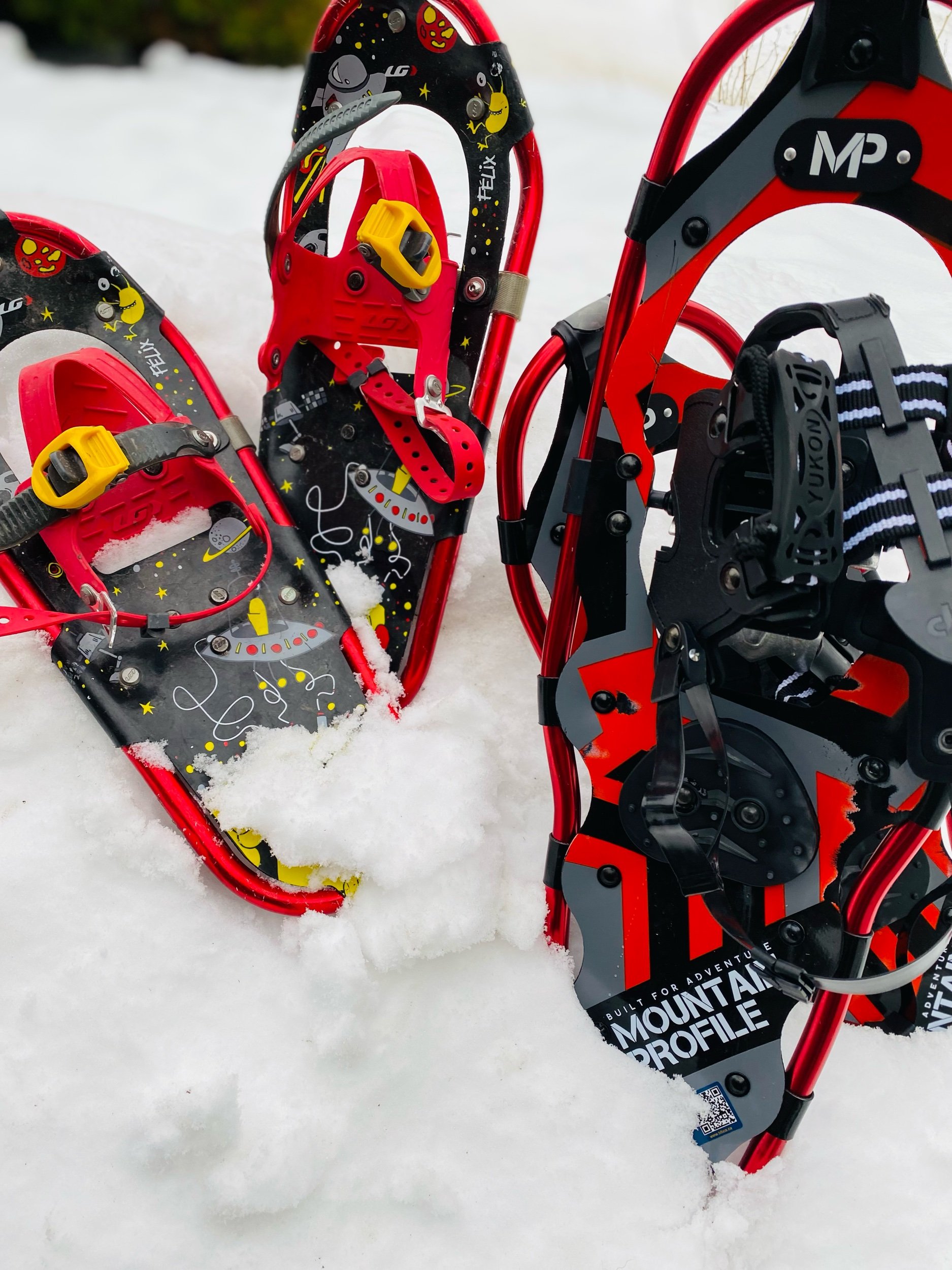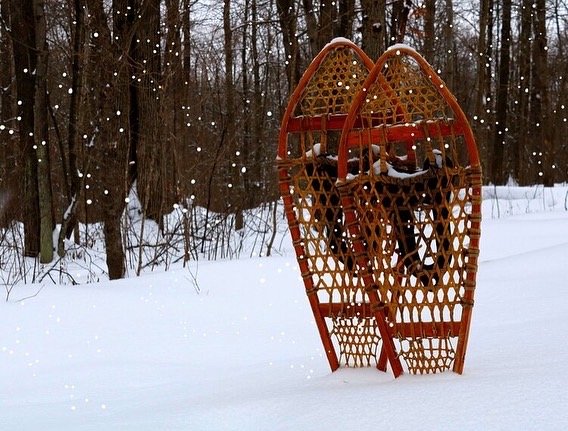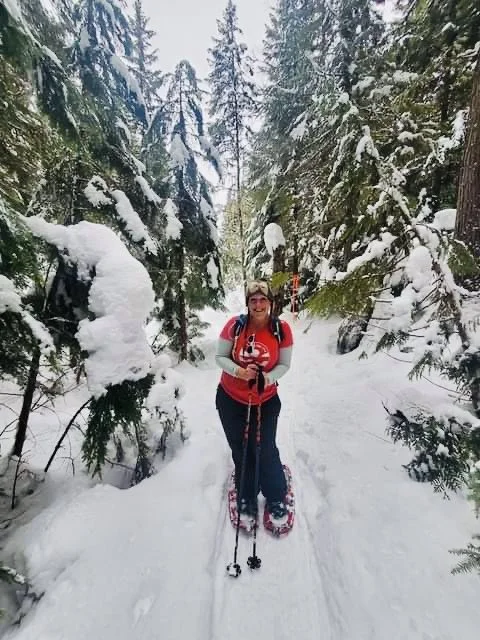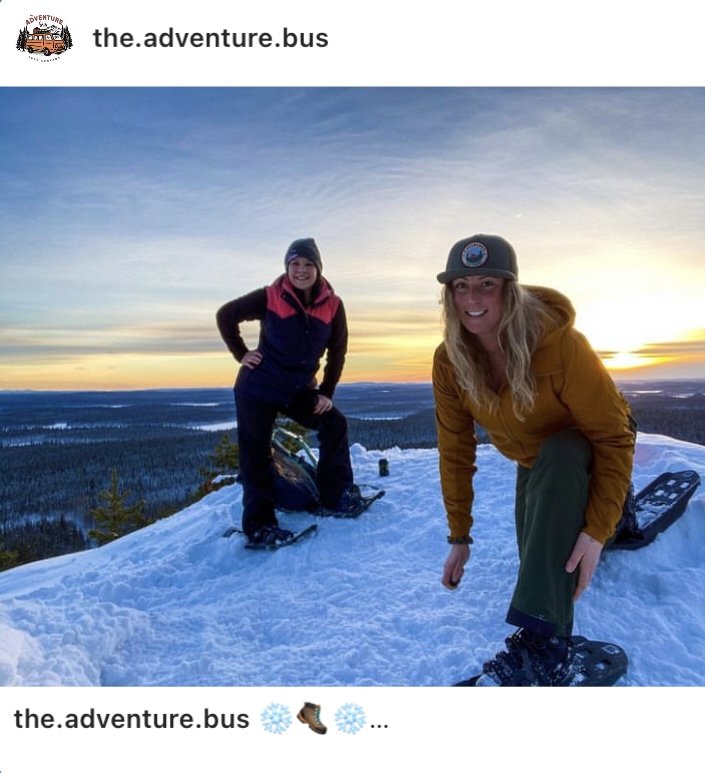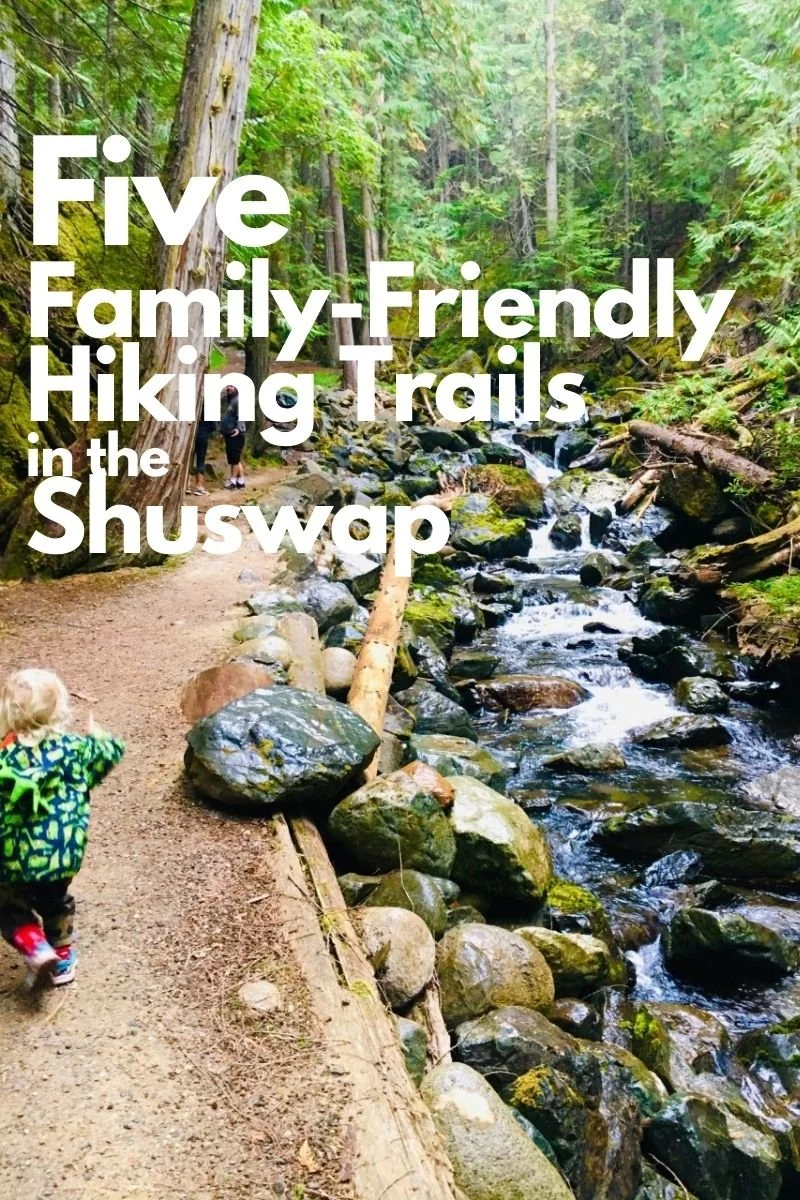Tips & Tricks for Snowshoeing
When LIFE gives you SNOW, go Snowshoeing!
Snowshoeing is a great winter sport of all ages and abilities. And often, all levels, from beginner to expert, old to young, and everyone in between can enjoy this fantastic winter sport together!
Snowshoeing is for fun, fitness, friendship, and it’s basically free (once you have your set up).
For a good guide to snowshoeing see here: REI | Snowshoeing| A Beginners Guide
Shuswap Adventure Girl
Here are our top tips and tricks!
Gear up: pair your snowshoes with waterproof boots (I use my regular hiking boots) and some warm wool socks! I also wear gaitors and fleece-lined leggings or waterproof pants. Do not wear cotton!
If you are breaking trail, be sure to stretch those groin, hip, and calf muscles first! Snowshoeing in deep snow is hard work and works muscles you may not have used in awhile!
Choose a trail that fits your skill level. Consider visiting Nordic ski and snowshoe areas! Well-marked trails with difficulty ratings can help get you started.
Techniques: Know the type of terrain you’ll be adventuring in.
Going uphill in powdery snow, you’ll want to know the kick-step (building a step with your shoes).
On crusty, hardpack snow, you probably won't be able to kick-step. Instead, you'll be relying on the traction of your snowshoe crampons or cleats, and your poles.
While going downhill- bending your knees, positioning poles in front create stability and keep your body weight slightly back.Know your snow: always be mindful of weather conditions, natural obstacles that may lie beneath the snow, tree and rock wells, and the risk of moving water under the ice.
Leave a trip plan! and carry the Ten Essentials
Focus on soft knees and an athletic stance to help with balance.
Poles, poles, poles with snow baskets. Poles provide you better balance, they also help give your upper body a workout.
To set your pole length for flat terrain, flip your pole upside-down and grab the pole just under the basket. Adjust the length until your elbow is at a right angle.Watch for trees or water sources poking through, seeing these mean the snow is built up on unstable ground and you are more likely to poke through, try to step over or around.
Know it’s ok to fall, and it might be a struggle and a half getting up but stay calm, un pretzel your legs, take off your pack if its heavy and wiggle yourself back up!
As you are pushing yourself up with your hands, fill the holes with more snow to give you some solid ground.
Some old wood and leathers!
Shuswap Adventure Girl
My personal hacks for cold weather exploring:
Bring a headlamp, you never know if you will be out past dark.
I like to keep hot paws hand warmers in my pocket next to my phone. The battery lasts longer when your phone is not freezing cold!
If the temperatures are really cold, use warm water in your water bottle. This prevents it from freezing. Stay hydrated!
Unless you have a good system or an ice-proof water bladder hose, skip the bladder altogether and carry a water bottle instead. The hose and ends freeze up!
Here’s me at Skmana Nordic Trails
Shuswap Adventure Girl
Tips and tricks brought to you by my own personal experience and from our friends in Northern BC, The Adventure Bus!
Our friends in Northern BC, The Adventure Bus!



